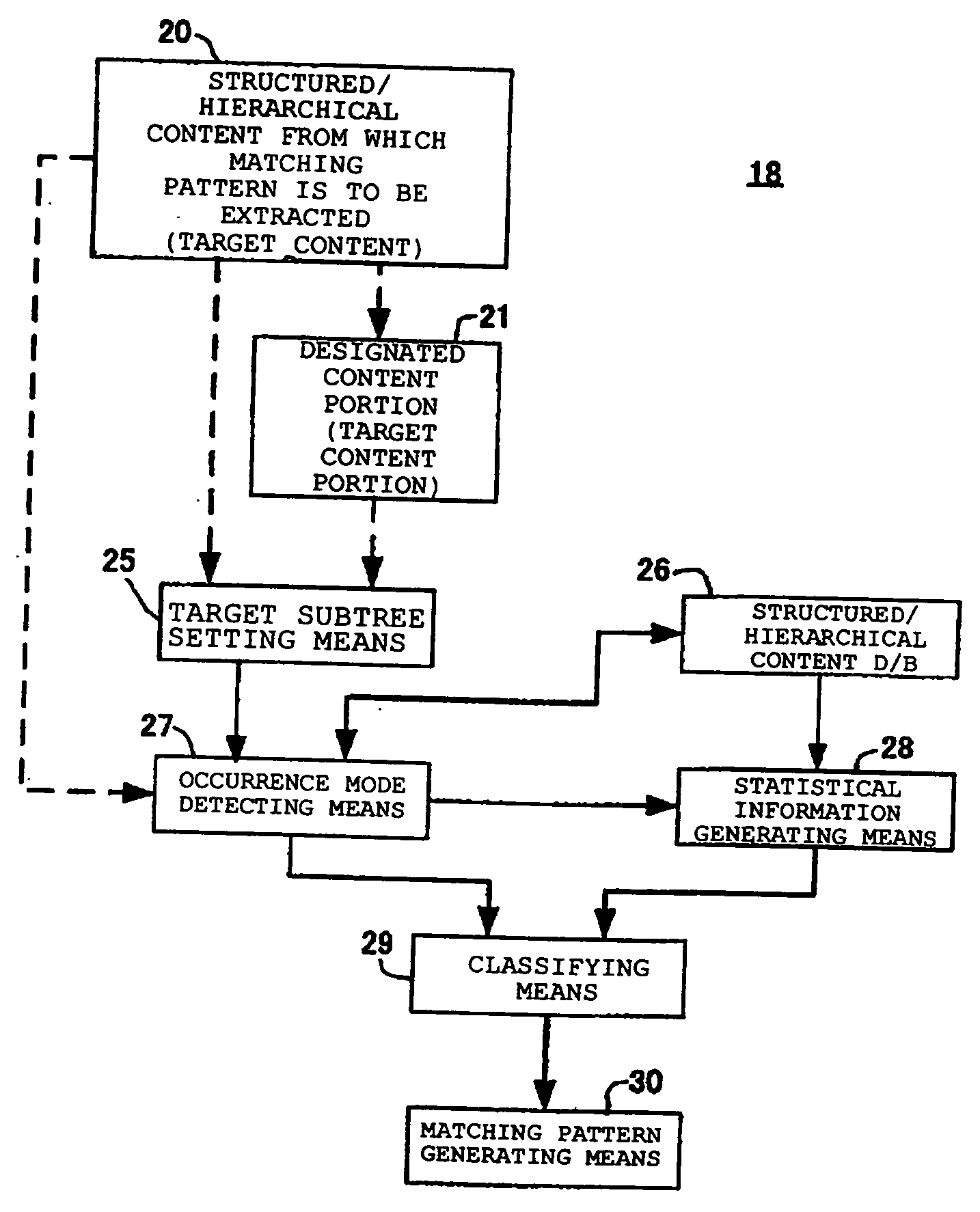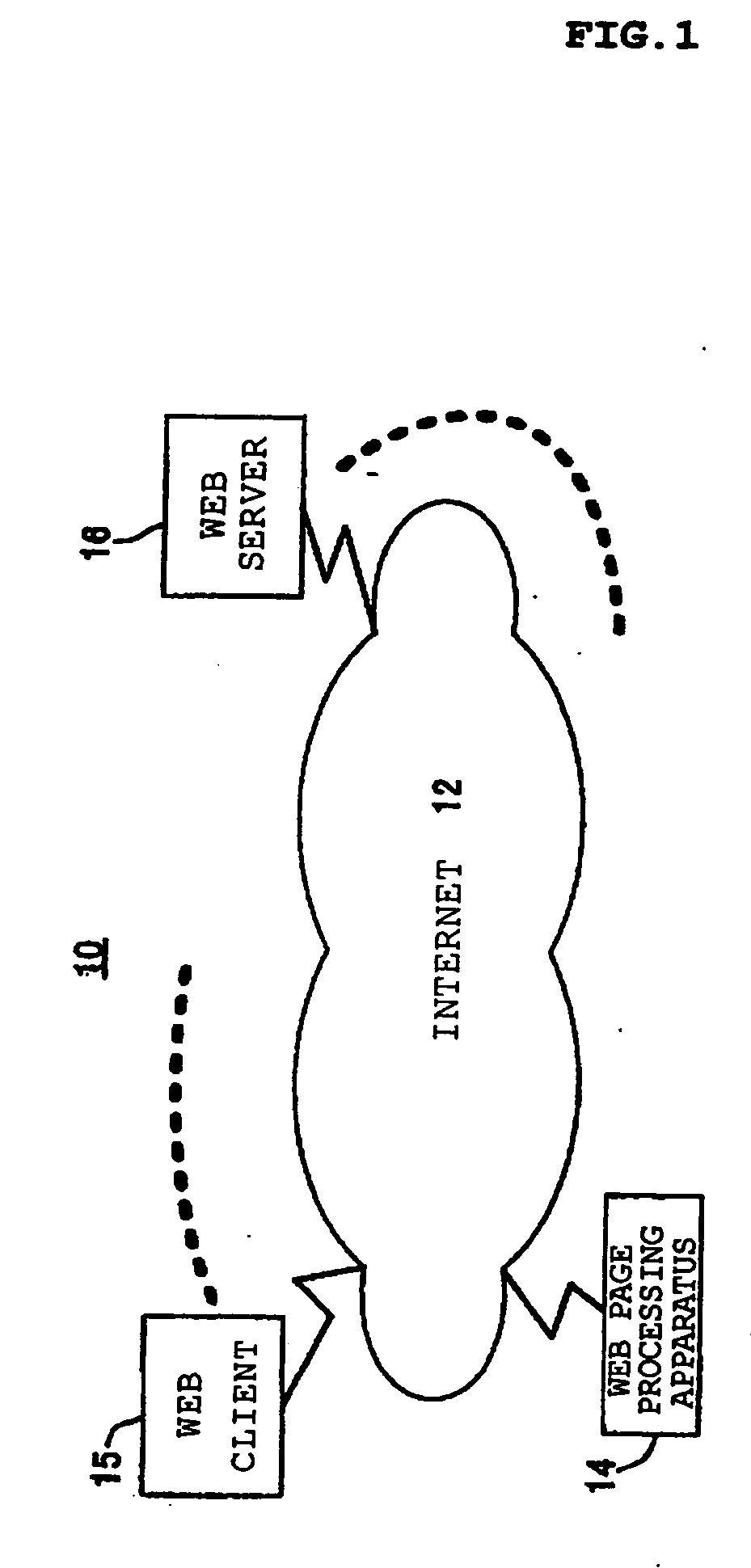Processing structured/hierarchical content
a structured/hierarchical content and content technology, applied in the field of processing structured/hierarchical content, can solve the problems of ineffective method, troublesome adjustment work, and original content must be changed
- Summary
- Abstract
- Description
- Claims
- Application Information
AI Technical Summary
Benefits of technology
Problems solved by technology
Method used
Image
Examples
example
Target: http: / / www.asahi.com / international / update / 1005 / 010.html Adjacent URL: http: / / www.asahi.com / international / update / 1005 / 012.html
(b) Layouts are mutually analogous. For this determination, a clustering technology by comparison of table structures of the layouts is utilized (Example: the above-mentioned Patent Document 2). This technology is a method for clustering the layouts of the respective pages by use of the embedding structures of the tables as a base, and by the technology, a list of the pages mutually analogous in layout can be obtained.
A group of pages that applies to these conditions is the “adjacent pages.” Processing steps therefor will be described below. In a similar way to Type A, a state is considered, where the annotation author has already designated a certain node on the tree by use of the annotation editor. Step 1: The list of the adjacent pages is acquired. It is assumed that a cache server has a calculation algorithm of the adjacent pages, and the li...
application example
to Conventional Dynamic Matching
Application to Dynamic Matching Annotation by Site Pattern Analyzer
The operation procedure of the author is as follows. Step 1: Searching a group mistakenly matched by the site pattern analyzer. Step 2: Selecting several pages correctly matched and several pages mistakenly matched. This operation is similar to that of semi-automatic detailing. Step 3: Selecting a group of pages formed by the pages correctly matched from the list, and selecting the “detailing” therefor. Step 4: Automatically generating a matching pattern with which the group of correct pages is essentially matched by use of the difference calculation. Step 5: Confirming that the generated matching pattern is not matched with the error group. In the case where the matching with the error group occurs, the conditions are further detailed by use of the conventional semi-automatic correction function of the XPath.
Next, the precision in the case of using the adjacent pages will be ...
other example 1
It is possible to construct a “fail-safe” system covering, by use of the free annotation of this time, leaked pages, leaked information and the like as a result of unmatching with the annotation in the conventional annotation system. This greatly contributes to business through quality assurance of the transcoding. Furthermore, by performing the detailing of the matching conditions by the present invention, labor for correcting the annotations can be reduced, and the annotation authoring time can be shortened. This is also a function that greatly contributes to the business. Furthermore, the group portion that has been able to be determined only by use of the character string matching of the XPath in the conventional transcoding can be covered by the free annotation. FIG. 32 shows an example of a Web content where predetermined stationary nodes move. In FIG. 32, portions such as “LYCOS Service” and “Related Topics” sometimes move vertically, and are diffic...
PUM
 Login to View More
Login to View More Abstract
Description
Claims
Application Information
 Login to View More
Login to View More - R&D
- Intellectual Property
- Life Sciences
- Materials
- Tech Scout
- Unparalleled Data Quality
- Higher Quality Content
- 60% Fewer Hallucinations
Browse by: Latest US Patents, China's latest patents, Technical Efficacy Thesaurus, Application Domain, Technology Topic, Popular Technical Reports.
© 2025 PatSnap. All rights reserved.Legal|Privacy policy|Modern Slavery Act Transparency Statement|Sitemap|About US| Contact US: help@patsnap.com



